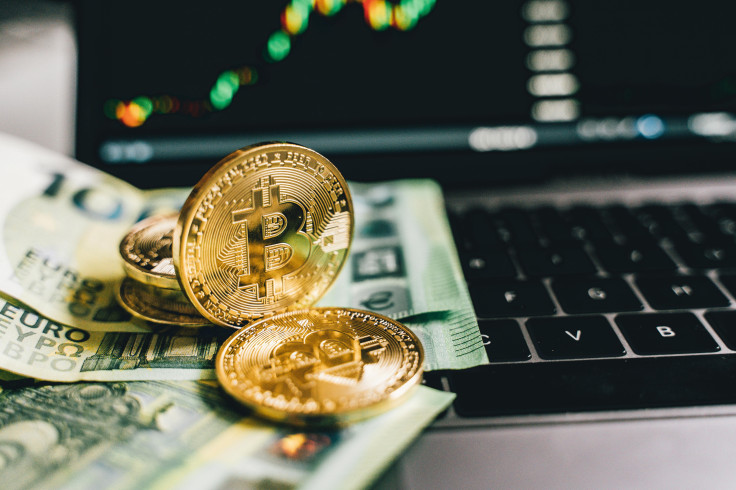
Bitcoin halving is a significant event that occurs roughly every four years, marking a gradual slowdown in the Bitcoin production rate; this is done to maintain a maximum limit of 21 million Bitcoin tokens. Around 19 million Bitcoin tokens are circulating, with the limit expected to be exhausted by 2140.
The halving event plays a vital role in the Bitcoin market, often leading to a rally before the event. This year, prices were boosted by the U.S. Securities and Exchange Commission's decision to approve the launch of bitcoin exchange-traded funds (ETFs).
Since their inception in January, these ETFs have witnessed billions of inflows. Recently, bitcoin prices experienced a drop from over a record $73,115 in March to $61,272 on April 17.
However, they rebounded quickly through the halving event and have surpassed $66,000. Similar trends were observed after the previous halving in 2020, where bitcoin prices climbed almost 12% in a week and a whopping 659% in the following 12 months.
How Does Bitcoin Halving Work?
The halving event impacts miners more than investors. Bitcoin is stored and exchanged using Blockchain technology, where information in each block is verified by miners using high-end GPUs that solve complex mathematical problems.
In turn, miners earn bitcoins as a reward for solving puzzles and building the chain. The halving event occurs when 210,000 verified blocks are added to the chain. The built-in coding reduces the supply of Bitcoin to drive demand through scarcity.
After the latest halving, the reward for mining a bitcoin block dropped to 3.125 BTC from 6.25 BTC per block. Jyotsna Hirdyani, Bitget South Asia Head, pointed out a palpable sense of anticipation rippling through the crypto industry, with Bitcoin miners strategically depleting their coin stashes ahead of the reduction in per-block rewards.
Recent data shows a decline in miner-held Bitcoin, which signals a shift in strategy towards profit-taking and operational upgrades amidst Bitcoin's recent rally to record highs.
Although high Bitcoin prices can offset the reduced miner rewards for now, small-scale miners may face several hurdles immediately after the event. They'll need more computing power to produce new coins, thus requiring better hardware and increasing electricity consumption.
Do You Invest Before Or After Bitcoin Halving?
Investing in bitcoin is risky, given its volatile nature, regulatory roadblocks, and rising concerns about its use in cybercrimes. However, one can invest in regulated brokers to protect their funds from theft or losses and keep their credentials, like wallet keys, safe.
Bitcoin prices have historically picked up momentum before halving events. Although price corrections were observed during or after halving events due to changes in token supply and miner activity, prices significantly appreciated in the following months.
Nonetheless, growth was never a straight line. Megan Stals, a Stake Market Analyst, said, "Bitcoin trading volume generally sees the most significant increase in the 60 days before halvings, as interest builds and prices gain momentum." Stals also believed that Bitcoin is susceptible to elevated interest rates.
"There are still concerns that the U.S. has not yet successfully tamed inflation, and traders have begun reducing their expectations for rate cuts in 2024," she said. The first halving in November 2012 buoyed bitcoin prices to $1,100 from $11 in 12 months.
The next event in July 2016 drove token prices to $20,000 from $650 by the end of 2017. The 2020 halving boosted bitcoin prices to the then-record-high of $69,000 within a year. However, the recent halving may create a price trend of its own.
The crypto industry has come a long way in the last four years, with improved regulatory oversight, institutional engagement, and mainstream adoption. Recently, Bitcoin has surged past $70,000, marking an all-time high.
This rally results from increased institutional adoption, acceptance, and the halving event. More and more companies are getting involved in cryptocurrency, with Elon Musk's Tesla investing $1.5 billion in Bitcoin and accepting it as a payment method for its products.
Moreover, the pandemic has highlighted the need for digital payment methods, increasing interest in cryptocurrencies. This has led to a surge in demand for bitcoin and other cryptocurrencies, driving up prices.
However, this surge in demand has also led to increased concerns about the environmental impact of bitcoin mining. Mining bitcoins requires significant energy, leading to a substantial carbon footprint.
This has led to calls for more sustainable mining practices and increased cryptocurrency market regulation. The Bitcoin Halving event is a crucial moment that impacts the cryptocurrency market significantly.
It ensures a gradual slowdown in the bitcoin production rate, leading to increased demand through scarcity. Although investing in Bitcoin is risky, it can be profitable if done correctly.
As the crypto industry continues to evolve and gain mainstream acceptance, we can expect increased institutional adoption and significant price fluctuations.







